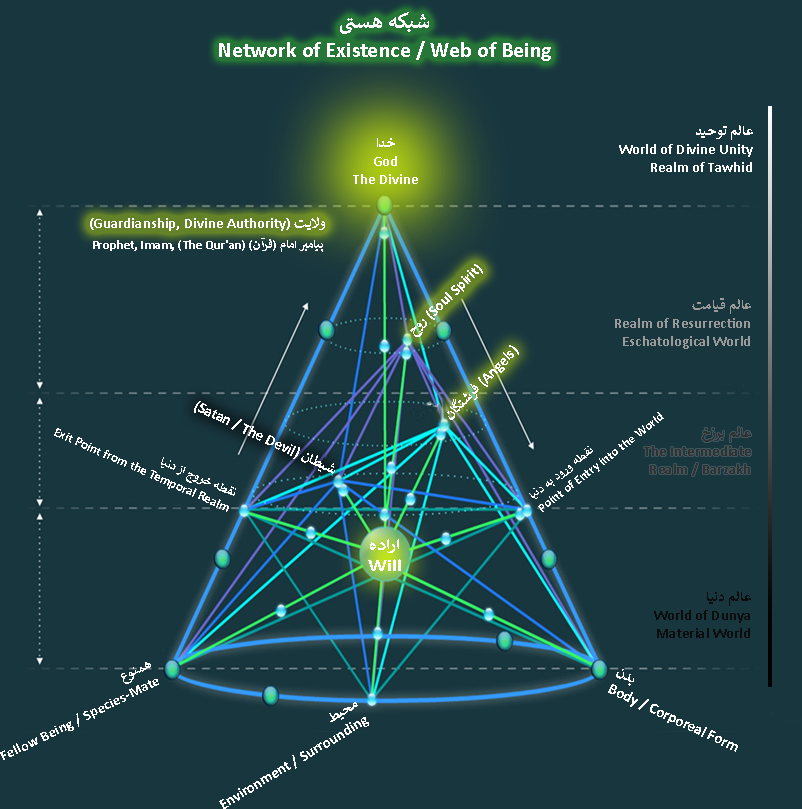The Networking Map of Existence

The Network of Existence
Topic of Discussion:
What is the “Network of Existence”? Why and how does it operate? (Transition to visual representation of the dynamic Network of Existence)
The Problem:
To conduct valid research, we need to determine the position of a phenomenon within the overall network of existence. How can we map the universe, showing the position, coordinates, and relationships between beings and realms?
Assumptions:
The term “network” refers to a connected set of systems that cover a unified goal or multiple objectives. A “system” is a collection of elements that interact with each other to achieve a specific purpose. Within any network, changes in one element impact other elements and the whole system. No component acts independently of the entire network. In some cases, “network” is used interchangeably with “system.”
Hypothesis:
Islamic philosophical arguments lead to the theory of the “networked nature of existence.” This theory posits that all phenomena in existence are interconnected through cause-and-effect relationships, influencing and being influenced across all layers of the universe.
Explanation of the Discussion:
According to this theory, no movement or event occurs in isolation within existence. Transcendent realms beyond the material world are the origins of physical entities. Interactions within the material world depend on events in the metaphysical realms. Actions in the material world, which are triggered by metaphysical causes, further affect those higher realms, initiating new effects within the material world. This cycle, rooted in God’s will, continues perpetually.
For example:
- The body impacts the soul, and the soul influences the body.
- Both are affected by their environment, and in turn, influence it.
- These interactions extend to metaphysical channels, which impact all realms, forming a unified and interconnected system.
According to Islamic Transcendent Philosophy (Hikmat al-Muta’aliyah), existence begins from the infinite being of God and descends to the potentiality of existence (hyle). These stages are connected through cause-and-effect relationships, forming a cohesive whole. Realms such as the Akhirah (Hereafter), Barzakh (Intermediate World), and the material world represent three major layers of existence.
Implications of the Network Model:
The “Network of Existence” theory underscores that no entity or event operates in isolation. Every minor change within one part of existence propagates across all connections. For example:
- Choosing a color or style of clothing influences one’s mood, which then impacts thoughts, ultimately shaping life’s direction.
- This interconnected nature means that directing human movement toward God requires a holistic alignment of various factors, including spiritual, physical, and environmental elements.
To guide humanity effectively toward God, religion must provide comprehensive solutions to the following key questions:
- How can we foster a strong connection with God?
- How can we achieve life’s ultimate goal?
- How can we maintain a healthy soul, body, and mind?
- How can we cultivate meaningful relationships with others?
- How can we create a harmonious living environment?
Conclusion:
This networked perspective on existence suggests that religion must address all dimensions of life—spiritual, ethical, educational, economic, and societal—to ensure alignment with its ultimate objective: guiding humanity toward God.
Key Concepts:
Philosophy, Transcendent Wisdom (Hikmat al-Muta’aliyah), ontology, universal map, hierarchy of existence, causality, and the formula of movement.




Leave a Reply